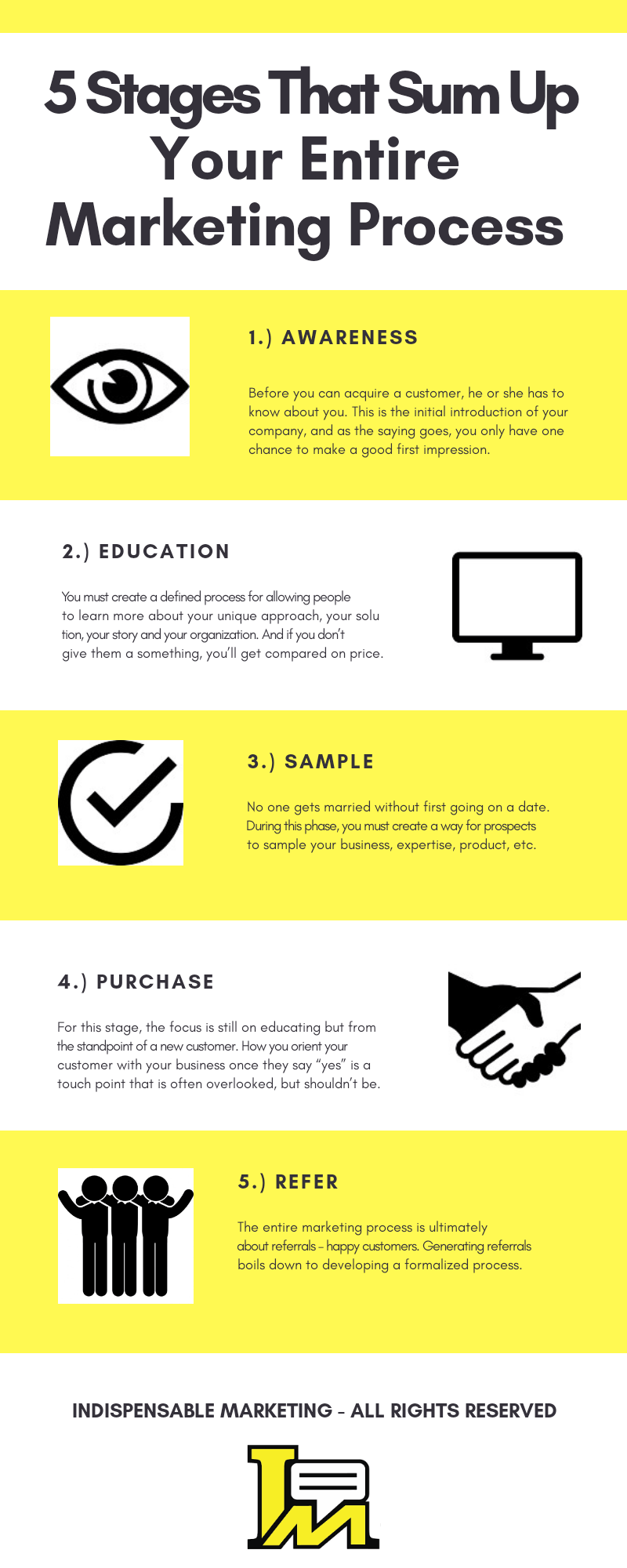Five Stages of The Marketing Process
Most small business owners view the customer journey from a very traditional and outdated point-of-view with stages such as Awareness, Consideration and Purchase, but for years I’ve promoted and consulted on executing a more holistic and effective approach in this “customer centered era” we live in today: Awareness, Education, Sample, Purchase and Refer.
These stages also represent the easiest way to explain and answer, “what is a marketing process?” in simple and practical terms. At the end of the day, you need to understand (and develop in some cases) the logical path a lead must follow as their relationship evolves with your organization.
What are the five stages of the marketing process?
What activities make up the marketing process?
1. Awareness
– Your advertising, blogs, organic search, public relations, social media participation, speaking, business events, content and referred leads
2. Education
– Your website, phone conversations, speaking, reviews, client testimonials, email newsletter, marketing kit, white papers, success stories, and sales presentations
3. Sample
– Your audits, webinars, courses, evaluations, proposals, trial offers and speaking
4. Purchase
– Hand-off introductions, new customer kit, quarterly events, quick start guides, review check-ins, in-depth user manuals, delivery, customer support communities, and financial arrangements
5. Refer
– Post customer survey, gift certificates, customer appreciation events, feature success stories in marketing materials, and partner introductions
Constructing the marketing process
With an understanding of your customer’s touchpoints and journey, you can start to fill in the logical stages of your marketing process with the discoveries you found, which will lead to a more profitable business.
By taking this marketing process approach and giving equal attention to generating awareness and building trust, you set your business up to create the kind of momentum that comes from a beginning to end marketing process.
In order to start your thinking about the marketing process concept and gaps, you may have to ponder these questions:
- How will people become aware of our business and brand?
- How will people trust our business and brand?
- How do people sample our business and brands brilliance?
- How do people get more out of our service or product?
- How do we intentionally generate referrals?
Every time you enter a new market or develop new a product or service you can use this marketing process framework as a way to make sure your organization is on the path to success.
Contact Your Marketing Consultant at Indispensable Marketing
If you’re a service based business that needs help with creating a marketing process or your company’s online presence on Google and other search engines, at Indispensable Marketing we can help. We offer marketing strategy consulting, marketing audits, monthly marketing packages, consultations, exploratory calls or monthly local SEO services. Contact us for more information.





